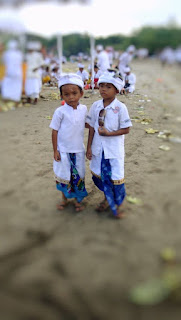La magie de NYEPI !! Une fois dans l'année, c'est la journée de silence donc interdiction de sortir dans les rues, il faut rester chez soi en ne faisant aucun bruit et ne pas allumer les lumières (tout à la bougie),
Et il y a des gardes qui parcourent les rues afin de veiller à ce que les consignes soient bien respectées.
Et il y a des gardes qui parcourent les rues afin de veiller à ce que les consignes soient bien respectées.



















